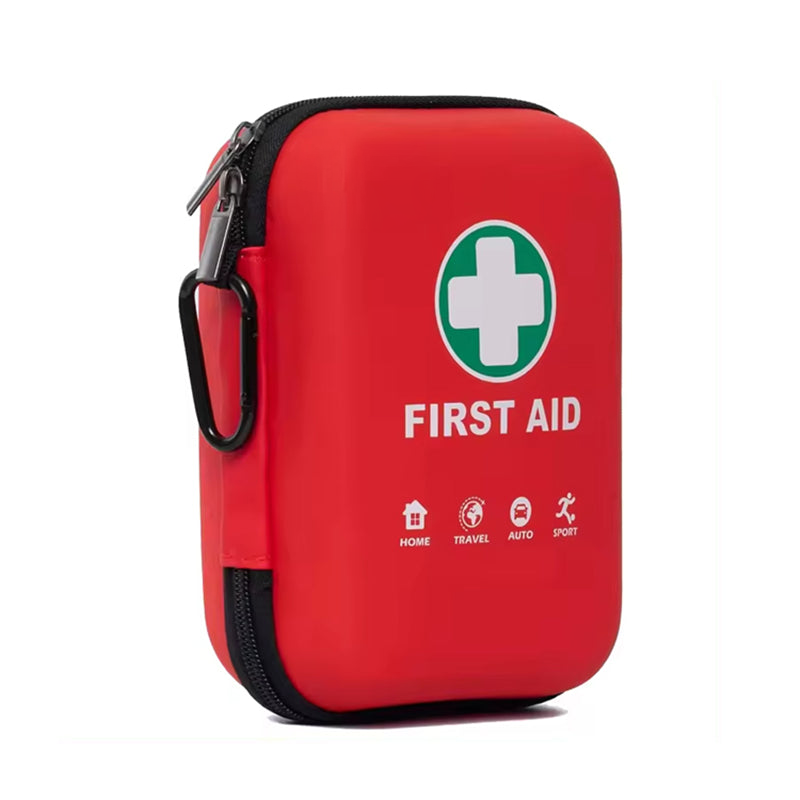Additional Pet First Aid Knowledge

Pets give us so many happy moments, and there are reasons to help your pet in case of an emergency situation.
Some basic first aid supplies in a pet first aid kit
- Gloves:Further infection can be avoided. Discard after use and do not reuse.
- Emergency Blanket:You can keep your pet warm and calmed to avoid. shock. It can also be used as a stretcher for your pet to lie on if they are unable to move on their own.
- Ice Pack:Stay cool and relieve pain.
- Triangular Bandage:Helps control bleeding and keep wounds clean.
- Tongue Deflector:Easy to check your pet's mouth to avoid bites.
- Tweezers:Tweezers can help remove foreign objects, such as spines lodged in claws.
- Safety Pins and Medical Tape:Can help hold the bandage in place.
- Elatic Bandage:Provides protection for soft tissue injuries.
- Blunt Scissor:Use to cut bandages, gauze, splints or pet hair.
- Cotton Swab:Topical cleaning, sterilization.
- Pet Self-adheri Bandage:It will not stick to your pet's fur, is comfortable and breathable, and helps protect wounds.
- Tourniquet:Helps relieve animal hemorrhaging.
- sterile gauze pad:Absorbent, sucking out excess fluid from the wound, avoiding inflammation and helping wound recovery.
Common measures for pet first aid
Always put a collar or Elizabethan collar on your pet before handling to prevent your pet from biting due to pain.
Below we talk about the steps that can help you cope with emergencies with your pet
Step.1
Call the veterinary hospital for help, ask what can be done at the moment and tell you how long it will take to arrive at the hospital.
Step.2
An injured pet may want to run or hide, if you need to leave your pet's side for a short period of time, place it in a safe location before leaving.
Step.3
Have a pet emergency kit ready, including anything that may be helpful in veterinary diagnosis, such as medications your pet is taking.
Step.4
Check the directions to the vet.
Step.5
Place the pet safely and securely in the car. Instinct may cause your pet to bite if it is scared or in pain, so be careful. A towel or blanket can be gently wrapped around the pet. If there is a spinal injury, take special care to support your pet's back and neck.
Step.6
Upon arrival at the hospital, if your pet is large and heavy and you are unable to move it yourself, you can ask the hospital staff for assistance such as a stretcher.
Other considerations
The pet emergency room can be a panic-inducing and frightening place, especially if your pet is in serious condition, but often this is when you need to do your best to remain calm.
Registration
Please do your best to remain calm, explain the situation to your veterinarian, and provide information such as your pet's medical records.
Avoid Anxiety
Try to avoid amplifying your anxiety, pets can sense our stress so try to stay calm for their sake.
Allow your pet to relax
Talk to your pet, stroke gently and keep it still so it doesn't get worse.
Wait patiently and understand
If the hospital is busy, the veterinarian or caregiver will determine the severity of your pet's problem and treat life-threatening pets first, and may obtain your pet's medical history and check vital signs for less serious problems first. Please understand that the doctors are making every effort to save the lives of all pets who come to the hospital.
Preparing for Hospitalization or Home Care
Your pet may need to be hospitalized for follow-up care and may even be referred to other specialists for more advanced testing or surgery. If your pet is ready to go home after diagnosis, ask about home care and follow-up exam considerations.
